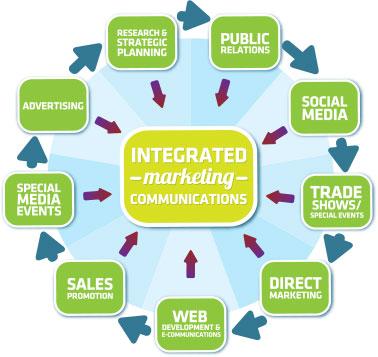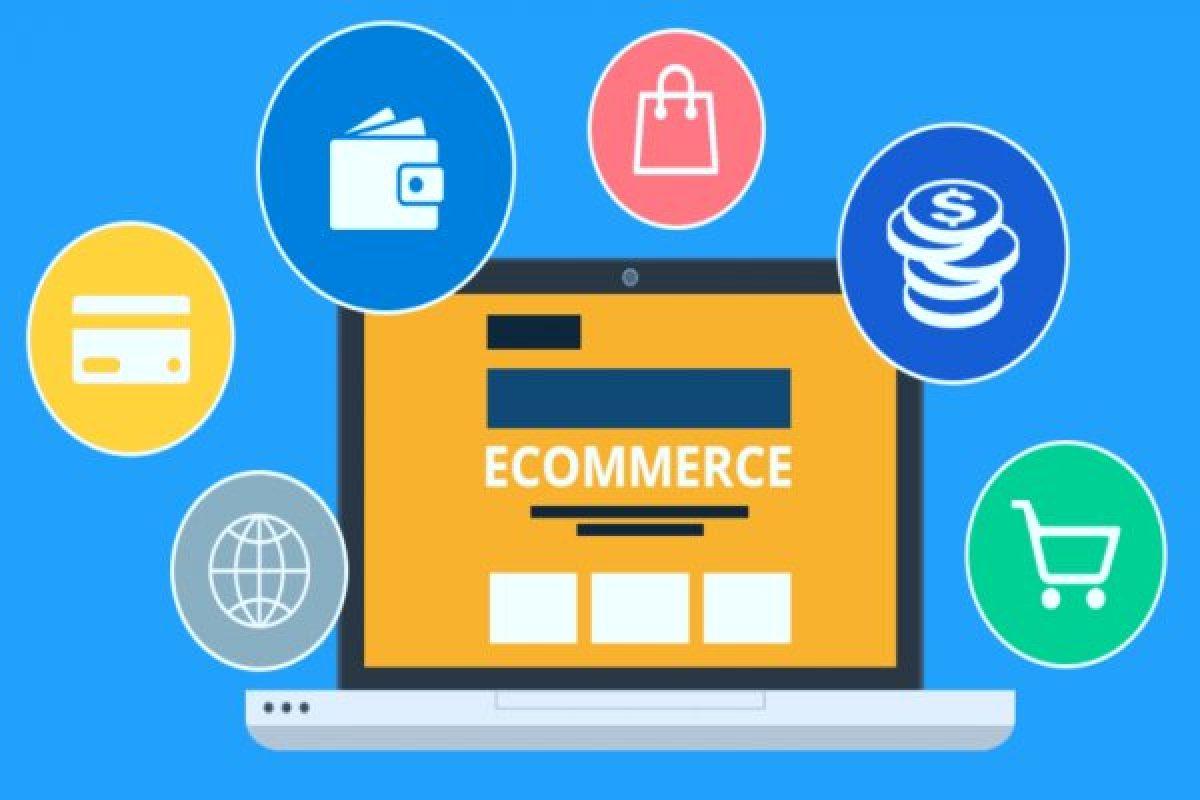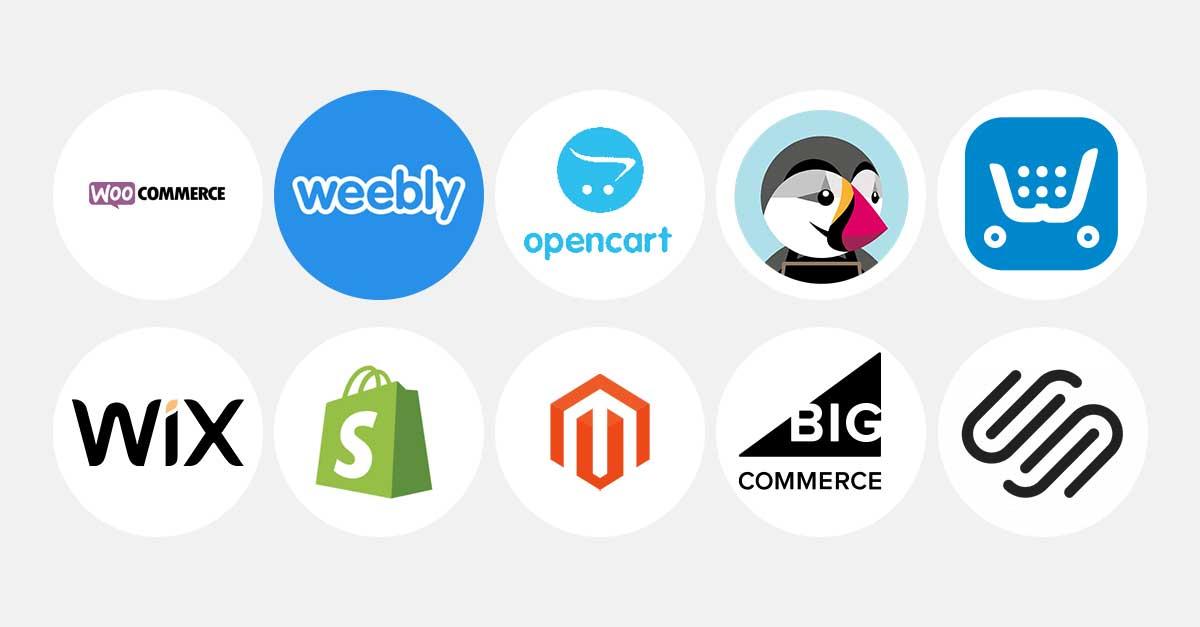Looking to launch your online store in 2025? Choosing the right eCommerce platform is crucial! From user-friendly interfaces to robust features, the best options will empower your business to thrive. Let’s explore the top choices that can elevate your sales!
Best Ecommerce Platforms and Software in 2025
In the ever-evolving world of online shopping, choosing the right eCommerce platform can make or break your business. As we step into 2025, the landscape is more dynamic than ever, with innovative tools and features designed to streamline your operations and enhance customer experiences. Whether you’re a budding entrepreneur eager to launch your first online store or a seasoned business owner looking to revamp your digital presence, selecting the best eCommerce software is crucial for your success. In this article, we’ll explore the top eCommerce platforms of the year, breaking down their standout features, strengths, and unique offerings. Get ready to boost your online sales and elevate your brand—let’s dive into the best options available in 2025!
Exploring the Top Ecommerce Platforms of 2025
As we navigate through 2025, the ecommerce landscape continues to evolve at a rapid pace. Businesses are no longer limited to just traditional online storefronts; they now seek platforms that offer flexibility, integration, and advanced features. Let’s dive into the standout ecommerce platforms that are shaping the industry this year.
Shopify Plus
Shopify Plus has cemented its status as a top-tier choice for enterprise-level businesses. With an intuitive interface and powerful capabilities, it empowers merchants to scale effortlessly. Key features include:
- Automation Tools: Streamline your operations with built-in automation for order processing and marketing.
- Multi-Channel Selling: Seamlessly sell across social media, online marketplaces, and brick-and-mortar stores.
- Robust Analytics: Gain insights into customer behavior and sales trends to inform your strategies.
WooCommerce
For those already familiar with WordPress, WooCommerce remains a leading choice due to its flexibility and extensive customization options. As an open-source platform, it allows businesses to tailor their online stores to their specific needs. Some highlights include:
- Customizable Themes: Choose from thousands of themes to create a unique shopping experience.
- Extensive Plugin Library: Enhance functionality with a wide array of plugins for SEO, payment gateways, and more.
- Community Support: A vast community of developers and users ready to help troubleshoot and innovate.
BigCommerce
BigCommerce stands out for its built-in features that cater to growing businesses. It’s particularly favored by those looking for a robust solution without the need for extensive coding. Consider these advantages:
- SEO-Friendly: Built-in SEO features help improve visibility on search engines.
- No Transaction Fees: Maximize profits with no additional fees on sales.
- Integration Ready: Easily connect with various tools and services to enhance your store’s capabilities.
Squarespace
Ideal for visually-oriented brands, Squarespace excels in offering stunning templates and a user-friendly interface. It’s perfect for artists, photographers, and boutique retailers who prioritize aesthetics. Some key benefits include:
- Visual Appeal: Eye-catching designs that captivate visitors at first glance.
- Integrated Marketing Tools: Leverage email campaigns and social media integration to reach your audience.
- Mobile Optimization: Automatically responsive designs ensure a smooth shopping experience on any device.
Comparison Table of Ecommerce Platforms
| Platform | Best For | Key Feature |
|---|---|---|
| Shopify Plus | Large Enterprises | Automation Tools |
| WooCommerce | WordPress Users | Customizable Themes |
| BigCommerce | Growing Businesses | No Transaction Fees |
| Squarespace | Creative Brands | Visual Appeal |
Choosing the right ecommerce platform in 2025 means considering not just your current needs but also your future growth. Each of these platforms offers unique strengths that can cater to various business models and objectives. Whether you prioritize design, scalability, or functionality, there’s a perfect fit out there waiting for you!
Why User-Friendly Interfaces Matter for Your Online Store
When it comes to running a successful online store, the design and functionality of your website play a pivotal role in shaping customer experiences. A user-friendly interface can significantly influence how visitors interact with your site, impacting conversion rates and customer satisfaction. Here are a few reasons why investing in a seamless user experience is essential for your e-commerce success:
- Enhanced Navigation: A well-structured interface ensures that customers can easily find what they are looking for. Simple navigation menus, clear categorization, and intuitive search functions help guide users to their desired products without frustration.
- Increased Trust: A polished, user-friendly design conveys professionalism and reliability. When users feel comfortable navigating your site, they are more likely to trust your brand—leading to increased sales and customer loyalty.
- Reduced Cart Abandonment: Complicated checkout processes can lead to abandoned carts. A streamlined, user-friendly checkout experience encourages users to complete their purchases, reducing the likelihood of losing potential sales.
- Mobile Responsiveness: With an increasing number of shoppers using mobile devices, having a mobile-friendly interface is crucial. A responsive design ensures that your online store looks and functions well across all devices, catering to a wider audience.
Additionally, the implementation of customer-centric features can greatly enhance the overall shopping experience:
- Personalized Recommendations: User-friendly interfaces often incorporate algorithms that suggest products based on browsing history and preferences, making it easier for customers to discover items they may love.
- Customer Reviews and Ratings: Including user-generated content such as reviews can help build community trust. A user-friendly interface will make it easy for customers to read and leave feedback, improving engagement.
In a crowded e-commerce landscape, standing out is essential. A user-friendly interface not only boosts customer engagement but also drives sales. By creating an online store that prioritizes user experience, you are investing in the long-term success of your business. Remember, happy customers return, and they often bring their friends with them!
| Feature | Benefit |
|---|---|
| Easy Navigation | Helps customers find products quickly |
| Mobile Optimization | Caters to mobile users, increasing reach |
| Simplified Checkout | Reduces cart abandonment rates |
| Personalized Experience | Increases customer engagement and satisfaction |
The Role of Mobile Optimization in Ecommerce Success
In today’s fast-paced digital landscape, mobile optimization has transitioned from a luxury to a necessity for ecommerce businesses. With an increasing number of consumers shopping on their smartphones and tablets, ensuring that your ecommerce platform is mobile-friendly can significantly impact your sales and customer retention.
When designing a mobile experience, consider the following key aspects:
- Responsive Design: Your website should automatically adjust to fit the screen size of any device. This seamless experience encourages users to stay longer and complete their purchases.
- Fast Loading Times: Mobile users are often on the go. A delay of just a few seconds can lead to high bounce rates. Optimizing images and minimizing code can dramatically improve load times.
- Intuitive Navigation: Simplified menus and easy-to-use interfaces are crucial. A user-friendly layout allows customers to find what they need quickly, enhancing their shopping experience.
- Mobile Payment Options: Offering various payment methods tailored for mobile, such as digital wallets and one-click purchasing, can streamline the checkout process and reduce cart abandonment.
Moreover, analytics reveal that mobile-optimized sites not only attract more visitors but also convert them into buyers. According to recent studies, ecommerce sites that prioritize mobile design can experience:
| Benefit | Potential Increase |
|---|---|
| Conversion Rates | Up to 30% |
| Customer Engagement | 50% higher |
| Return Rate | 20% lower |
Additionally, search engines like Google prioritize mobile-friendly sites in their rankings. This means that neglecting mobile optimization can lead to decreased visibility, effectively limiting your audience reach. In an era where competition is fierce, taking steps to enhance your mobile presence is imperative for standing out.
Ultimately, investing in mobile optimization is not just about keeping pace with trends; it’s about meeting customer expectations. Modern consumers demand seamless experiences, and failing to deliver can result in lost sales and a tarnished brand reputation. As you explore the best ecommerce platforms and software in 2025, prioritize those that offer robust mobile optimization features to secure your business’s success.

Comparing Payment Processing Options: Which Platform is Best?
When it comes to selecting a payment processing platform for your eCommerce business, the choices can be overwhelming. Each option comes with its unique features, costs, and benefits, making it crucial to find one that aligns with your business model and customer needs. Here’s a breakdown of some popular platforms to help you make an informed decision.
Key Features to Consider
- Transaction Fees: Always review the fee structure. Some platforms charge a flat rate, while others may vary based on transaction volume and type.
- Payment Methods: Consider what payment options you want to offer customers — credit cards, PayPal, digital wallets, or even cryptocurrencies.
- Integration: Ensure the platform integrates seamlessly with your existing eCommerce software and other tools you use.
- Security: Look for platforms that provide robust security features like PCI compliance and fraud detection.
- Customer Support: Reliable support can save you from potential headaches. Check the availability and responsiveness of their customer service.
Popular Payment Processing Platforms
| Platform | Transaction Fee | Key Strength |
|---|---|---|
| PayPal | 2.9% + $0.30 | User-friendly interface |
| Stripe | 2.9% + $0.30 | Customizable options |
| Square | 2.6% + $0.10 | All-in-one solution |
| Authorize.Net | 2.9% + $0.30 | Extensive features |
Understanding Costs
Cost is often a deciding factor when choosing a payment processing option. While many platforms boast similar transaction fees, hidden costs can arise. Make sure to consider:
- Monthly fees
- Chargeback fees
- Withdrawal fees
- Currency conversion fees for international transactions
Conclusion: Making the Right Choice
Your choice of payment processor can significantly impact your customer experience and overall sales. Take the time to weigh your options, assess your business needs, and select a platform that not only meets your requirements but also enhances your customers’ shopping experience. After all, a smooth checkout process is often the difference between a completed sale and an abandoned cart.

Unlocking Growth with Integrated Marketing Tools in Ecommerce
In the fast-paced world of ecommerce, leveraging integrated marketing tools is essential for businesses looking to maximize their growth potential. By combining multiple platforms and software into a cohesive marketing strategy, online retailers can streamline their operations, enhance customer experiences, and ultimately drive higher sales. Here’s how integrated marketing tools can help unlock growth in your ecommerce business.
Firstly, the seamless integration of marketing tools allows for better data analysis. By utilizing platforms that communicate with each other, businesses can easily track customer behavior across different channels. This data provides valuable insights into purchasing patterns and preferences, enabling retailers to tailor their offerings and marketing campaigns more effectively. Some of the key metrics to monitor include:
- Customer acquisition costs
- Conversion rates
- Average order value
- Customer lifetime value
Moreover, integrated marketing tools enhance personalization efforts, which are critical in today’s ecommerce landscape. By analyzing customer data, businesses can segment their audience and create targeted campaigns that resonate with specific groups. This level of personalization not only improves engagement but also fosters loyalty among customers, leading to repeated sales. Imagine sending a tailored email to a customer, offering them a discount on items they’ve previously shown interest in—the results can be powerful.
Another significant advantage of using integrated tools is the ability to automate various marketing processes. Automation frees up valuable time for ecommerce businesses, allowing them to focus on strategic initiatives rather than mundane tasks. From scheduling social media posts to managing email campaigns, automation can significantly improve efficiency and effectiveness. Consider the following tasks that can be automated:
- Email marketing campaigns
- Inventory management alerts
- Customer follow-ups
- Social media engagement
Additionally, focusing on integrated marketing tools fosters a more consistent brand message across all platforms. Inconsistencies can confuse potential customers and dilute brand identity. By using a cohesive set of tools, businesses can ensure that their branding, tone, and messaging remain aligned, providing a unified experience that builds trust and recognition. A consistent brand experience can enhance customer satisfaction and encourage word-of-mouth referrals.
let’s not overlook the importance of cross-channel marketing. Integrated marketing tools allow for synchronized campaigns across email, social media, and other platforms, which significantly amplifies reach. For instance, a discount code shared via email can be promoted on social media, encouraging customers to engage with your brand through multiple touchpoints. This holistic approach helps in capturing attention and converting leads into loyal customers.
adopting integrated marketing tools is no longer a luxury for ecommerce businesses; it’s a necessity. By enhancing data analysis, personalizing customer interactions, automating processes, ensuring brand consistency, and enabling cross-channel marketing, online retailers can unlock unprecedented growth opportunities. As we move forward in 2025, the right tools can make all the difference in creating a successful ecommerce strategy that stands out in a competitive market.

The Importance of Security Features in Ecommerce Software
In today’s digital landscape, where online shopping has become a norm, the security of ecommerce platforms is paramount. Customers not only seek convenience and variety but also demand that their personal and financial information is safeguarded. When evaluating ecommerce software, it’s crucial to prioritize platforms that incorporate robust security features. Here’s why these aspects cannot be overlooked:
- Data Protection: The backbone of any ecommerce operation is customer data. With the rise of cyber threats, implementing encryption technologies such as SSL (Secure Socket Layer) is essential to protect sensitive information during transactions.
- Fraud Prevention: Advanced security features help in detecting and preventing fraudulent activities. Tools like AI-driven fraud detection can analyze purchasing patterns and flag suspicious behavior, providing an extra layer of protection.
- Compliance with Standards: Many regions have regulations, such as GDPR or PCI DSS, that mandate strict data protection practices. Choosing a platform that complies with these regulations ensures your business is legally protected and builds trust with your customers.
- Customer Trust: A secure shopping environment fosters customer confidence. When users know their data is safe, they’re more likely to complete transactions and return for future purchases, ultimately boosting your sales.
Moreover, the ability to integrate additional security measures such as two-factor authentication (2FA) and regular security audits greatly enhances the safety of your online store. These features not only protect your customers but also shield your business from potential breaches that can lead to significant reputational damage.
| Security Feature | Benefit |
|---|---|
| SSL Encryption | Secures data transfer between customer and server |
| AI Fraud Detection | Identifies and prevents fraudulent transactions |
| Two-Factor Authentication | Adds an extra layer of protection for user accounts |
Investing in a platform that prioritizes security can save you from costly breaches and legal issues down the line. As ecommerce continues to evolve, so too will the tactics employed by cybercriminals. A proactive approach to security ensures that your business remains resilient against emerging threats. Remember, in the world of ecommerce, security is not just an option; it’s a necessity.

Choosing the Right Ecommerce Platform for Your Business Size
When it comes to selecting an ecommerce platform, understanding your business size is crucial. The right platform can bolster your growth and streamline operations, while the wrong choice may lead to frustration and inefficiencies. Whether you are a startup aiming to make your mark or an established enterprise seeking to optimize your processes, there are key factors to consider.
For Small Businesses: If you run a small business, look for an ecommerce platform that offers user-friendly interfaces and affordable pricing. Consider solutions that come equipped with essential features but allow room for growth. Some popular options include:
- Shopify: Great for beginners with a plethora of templates and integrated payment processing.
- WooCommerce: Perfect for those already using WordPress, as it offers extensive customization options.
- Big Cartel: Ideal for artists and makers with straightforward selling tools and a simple setup.
For Medium-Sized Businesses: As your business grows, you may require more robust features and integrations. Look for platforms that can scale with your operations. Key considerations include:
- Magento: Offers powerful features for customization and is suitable for businesses with a bit more technical know-how.
- Squarespace: Provides beautiful templates and built-in marketing tools, perfect for visually-focused brands.
- PrestaShop: An open-source platform that gives you flexibility and control over your ecommerce setup.
For Large Enterprises: If you’re operating on a larger scale, you’ll need an ecommerce platform that offers extensive capabilities and support. Look for platforms that provide:
- Advanced analytics: To track customer behavior and optimize sales strategies.
- Enterprise Resource Planning (ERP) integration: For seamless business operations across departments.
- Dedicated support: To assist with technical issues and ensure uptime.
Here’s a quick comparison table to highlight some popular ecommerce platforms and their suitability for different business sizes:
| Platform | Best For | Key Features |
|---|---|---|
| Shopify | Small Businesses | User-friendly, Mobile-Responsive |
| WooCommerce | Small to Medium Businesses | Highly Customizable, WordPress Integration |
| Magento | Large Enterprises | Advanced Customization, Scalability |
| Squarespace | Medium Businesses | Design Flexibility, Built-in Marketing |
Ultimately, the ideal ecommerce platform will depend on your unique business needs and growth aspirations. Assess your operational requirements, budget, and desired features carefully to select a platform that aligns with your vision for success. With the right tools in place, you can focus on what truly matters: growing your business and delighting your customers.

Must-Have Features for a Seamless Customer Experience
In the fast-evolving world of eCommerce, providing a seamless customer experience is no longer a luxury—it’s a necessity. Shoppers are looking for platforms that not only meet their needs but also enhance their shopping journey. Here are some must-have features that can significantly elevate the customer experience:
- User-Friendly Interface: A clean, intuitive design allows customers to navigate easily, reducing frustration and increasing conversion rates.
- Mobile Responsiveness: With a growing number of consumers shopping via mobile devices, platforms must be optimized for all screen sizes.
- Fast Loading Speeds: Slow websites can lead to abandoned carts. Fast loading speeds are crucial for retaining customer interest and trust.
- Advanced Search Functionality: A robust search feature with filters helps customers find products quickly, enhancing their shopping experience.
Additionally, integrating personalized experiences can make a significant difference. This includes:
- Product Recommendations: Utilizing algorithms to suggest products based on browsing history can increase sales and customer satisfaction.
- Customizable Shopping Carts: Allowing users to save carts, wishlist items, and set reminders for purchases can enhance retention.
- Customer Reviews and Ratings: Showcasing authentic customer feedback builds trust and aids in decision-making.
Moreover, offering multiple secure payment options can cater to different customer preferences, making the checkout process smoother. Here’s a quick comparison of popular payment methods:
| Payment Method | Transaction Fees | Speed |
|---|---|---|
| Credit/Debit Cards | 1.5% – 3% | Instant |
| PayPal | 2.9% + $0.30 | Instant |
| Cryptocurrency | Varies | Variable |
Lastly, robust customer support, including live chat and comprehensive FAQs, can resolve issues swiftly. Offering real-time assistance gives customers the assurance that help is readily available, which is a key component in fostering loyalty.

Harnessing the Power of Analytics to Boost Sales
In the competitive world of ecommerce, harnessing analytics is not just beneficial—it’s essential for driving sales growth. By leveraging data insights, businesses can make informed decisions that cater to customer needs and optimize their strategies effectively. Here are some key ways to utilize analytics for boosting sales:
- Understanding Customer Behavior: Analytics tools can track user interactions on your site, providing insights into customer preferences. By analyzing this data, you can tailor your offerings and marketing efforts to align with your audience’s interests.
- Segmenting Your Audience: With advanced analytics, you can create detailed customer segments. This allows for personalized marketing strategies, ensuring the right message reaches the right demographic, which can significantly enhance conversion rates.
- Optimizing Product Placement: Data-driven insights can help determine which products are most appealing to customers. Use this information to strategically place high-demand items on your site, driving sales and increasing visibility.
- Enhancing Marketing Campaigns: By analyzing the performance of past campaigns, you can identify what worked and what didn’t. This knowledge will enable you to refine your marketing strategies, maximizing ROI on future campaigns.
Moreover, integrating predictive analytics can be a game-changer. By forecasting future trends based on historical data, you can stay ahead of the curve and adjust your inventory and marketing strategies accordingly. This proactive approach not only boosts sales but also minimizes excess inventory costs.
Another significant advantage of utilizing analytics is the ability to track customer engagement across various channels. This multi-channel analysis can highlight which platforms are performing best, allowing you to allocate resources effectively and invest more in high-performing channels.
To further illustrate the impact of analytics on sales, consider the following comparative table showing potential sales growth across different strategies:
| Strategy | Projected Sales Growth (%) |
|---|---|
| Targeted Email Campaigns | 25% |
| Personalized Product Recommendations | 30% |
| Optimized Ad Spend | 20% |
| Enhanced User Experience | 15% |
By embracing the full potential of analytics, ecommerce platforms can not only boost their sales but also cultivate a loyal customer base. Investing in the right software tools will empower businesses to leverage data effectively, creating a cycle of continuous improvement and growth in sales performance.

Future Trends in Ecommerce Platforms You Need to Know About
As we move deeper into 2025, the landscape of ecommerce platforms is undergoing a significant transformation. Businesses must stay ahead of the curve to ensure they leverage the latest trends and technologies. Here are some key developments that are shaping the future of ecommerce:
- Artificial Intelligence and Machine Learning: More platforms are integrating AI to enhance customer experiences. From personalized product recommendations to optimized pricing strategies, AI is making ecommerce smarter.
- Augmented Reality (AR) Shopping: AR is not just a gimmick anymore; it’s becoming a crucial feature. Customers can visualize products in their environment before making a purchase, leading to higher conversion rates.
- Subscription Services: Ecommerce sites are increasingly adopting subscription models tailored to consumer needs. This trend fosters customer loyalty and ensures consistent revenue streams.
- Mobile-First Design: With mobile shopping on the rise, platforms are focusing on creating seamless mobile experiences. Optimizing for mobile is no longer optional; it’s essential for success.
- Social Commerce: Integration of shopping features on social media platforms is skyrocketing. Businesses are using these channels to reach consumers where they spend most of their time.
Moreover, the demand for sustainable ecommerce practices is gaining momentum. Consumers are becoming increasingly conscious of their purchasing choices, leading to a rise in platforms that prioritize eco-friendly products and ethical business practices. Brands that embrace sustainability not only attract a loyal customer base but also contribute positively to the planet.
In terms of payment solutions, the rise of cryptocurrency payments is noteworthy. More ecommerce platforms are enabling transactions through digital currencies, catering to a tech-savvy customer base and opening doors to a global market. This trend is expected to continue growing as consumers seek more flexibility in payment options.
| Trend | Impact | Key Players |
|---|---|---|
| AI & ML | Enhanced personalization | Shopify, BigCommerce |
| AR Shopping | Improved customer engagement | IKEA, Sephora |
| Social Commerce | Increased sales through social media | Facebook, Instagram |
| Sustainable Practices | Attracting eco-conscious consumers | Patagonia, Everlane |
As these trends evolve, businesses must remain agile and ready to adapt. The ecommerce platforms that incorporate these innovations will not only enhance user experiences but also drive long-term growth. By paying attention to these emerging trends, your business can thrive in a competitive marketplace.
Frequently Asked Questions (FAQ)
Q&A: Best E-commerce Platforms and Software in 2025
Q: What are the top e-commerce platforms to consider in 2025?
A: Absolutely! In 2025, the top contenders are Shopify, WooCommerce, BigCommerce, and Wix. Each platform has its unique strengths. Shopify is great for beginners with its user-friendly interface, while WooCommerce offers flexibility for those already familiar with WordPress. BigCommerce shines in scalability, making it ideal for larger businesses, and Wix is perfect for those who prioritize stunning design without compromising functionality.
Q: How do I choose the right platform for my business?
A: Choosing the right platform hinges on a few key factors: your business size, technical expertise, and specific needs. If you’re just starting out, Shopify’s simplicity might suit you best. But if you’re running a larger operation with complex needs, BigCommerce could be the better choice. Always consider scalability and ease of use to ensure your platform can grow with your business.
Q: What features should I look for in e-commerce software?
A: Great question! Look for features like mobile responsiveness, SEO tools, payment gateway integrations, and robust analytics. Also, consider platforms that offer excellent customer support. In 2025, with the rise of personalization, AI-driven recommendations and marketing automation features are must-haves to enhance customer experience and drive sales.
Q: Is it necessary to have a mobile-friendly e-commerce platform?
A: Yes, absolutely! In 2025, mobile commerce is booming, with more consumers shopping on their smartphones than ever before. A mobile-friendly platform ensures your customers have a seamless shopping experience, regardless of the device they’re using. It’s not just a nice-to-have; it’s essential for staying competitive!
Q: What about payment options? How important are they?
A: Payment options are crucial! In today’s market, customers expect flexibility. Look for platforms that support multiple payment gateways—like PayPal, Stripe, and even cryptocurrency options. Offering a variety of payment methods can significantly reduce cart abandonment rates and enhance customer satisfaction.
Q: How do e-commerce platforms handle security?
A: Security is one of the top priorities for any e-commerce business. The best platforms in 2025 provide SSL certification, data encryption, and compliance with regulations like PCI DSS. Always opt for a platform that offers robust security features to protect your customers’ sensitive information and build trust.
Q: Can I integrate my e-commerce platform with other tools?
A: Definitely! In fact, integration capabilities are one of the key factors to consider. The best e-commerce platforms offer seamless integrations with CRM systems, email marketing tools, and inventory management software. This connectivity can streamline your operations and help you scale your business efficiently.
Q: What should I keep in mind regarding customer service?
A: Customer service is vital! Look for platforms that offer 24/7 support, multiple channels for assistance (like chat, email, and phone), and a wealth of resources such as tutorials and forums. Strong customer support can be a lifesaver, especially if you encounter any issues while running your online store.
Q: Are there any upcoming trends in e-commerce that I should be aware of?
A: Absolutely! In 2025, expect to see a surge in personalized shopping experiences driven by AI, increased use of augmented reality for product demos, and the growth of social commerce. Keeping an eye on these trends will help you stay ahead of the curve and tailor your strategies accordingly.
Q: Why should I invest time in choosing the right e-commerce platform?
A: Investing time in choosing the right e-commerce platform is crucial because it can significantly impact your business’s success. The right platform can enhance user experience, streamline operations, and ultimately drive sales. So don’t rush it! Take the time to research and find the best fit for your unique needs. You’ll thank yourself later!
In Conclusion
As we wrap up our exploration of the best eCommerce platforms and software for 2025, it’s clear that the digital landscape is evolving at a breathtaking pace. Whether you’re a seasoned entrepreneur or just dipping your toes into the world of online sales, the right tools can make all the difference in your business journey.
Choosing the perfect platform isn’t just about features and pricing—it’s about finding a solution that aligns with your unique vision, enhances your customer experience, and sets you up for long-term success. Remember, the best platform for you might not be the best for someone else. It’s all about your specific needs, goals, and the kind of relationship you want to build with your customers.
So take your time, weigh your options, and don’t hesitate to dive into demos and trials. The right choice will empower you to innovate, grow, and stand out in a crowded marketplace. As you step into 2025, let these insights guide you toward a platform that matches your ambitions and helps you create a thriving online presence.
Happy selling, and here’s to your eCommerce success!





